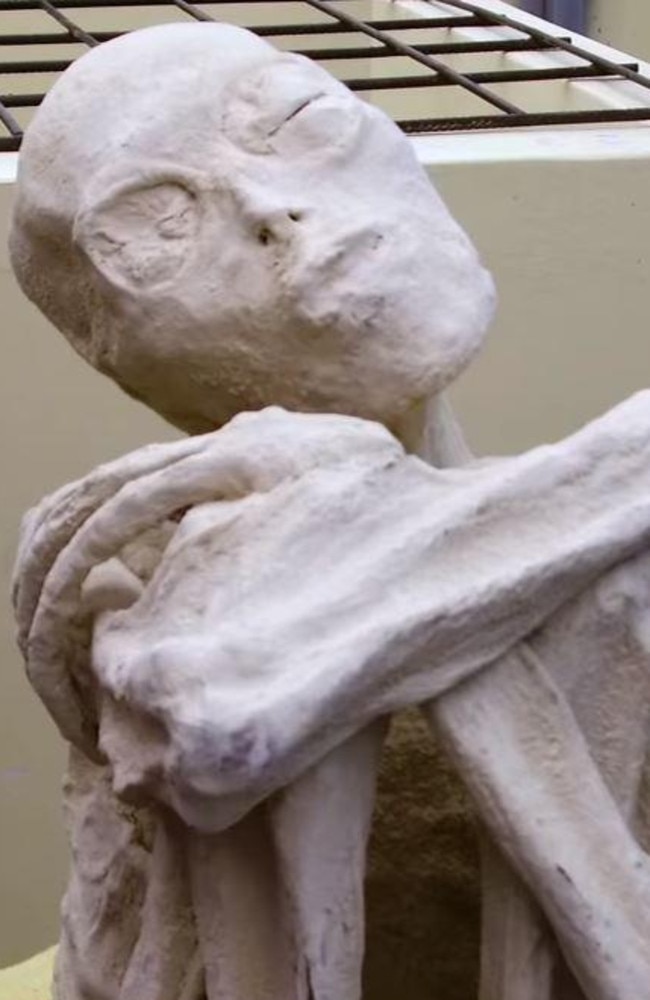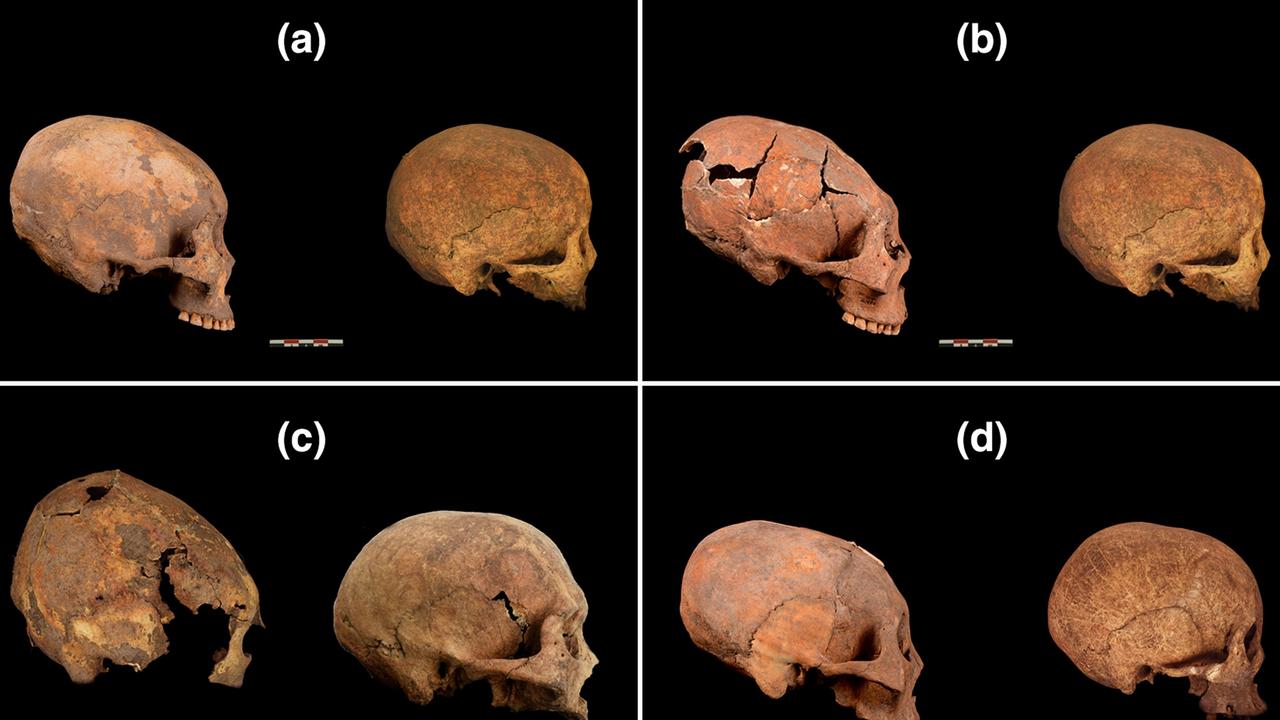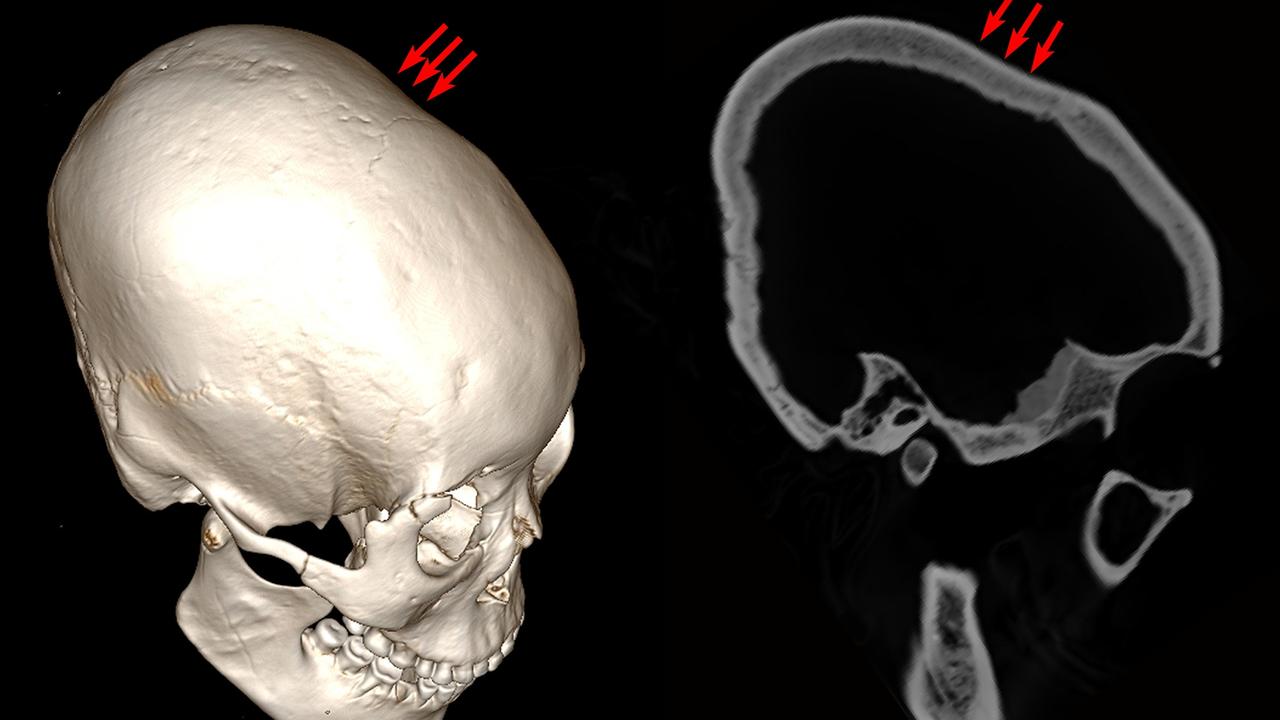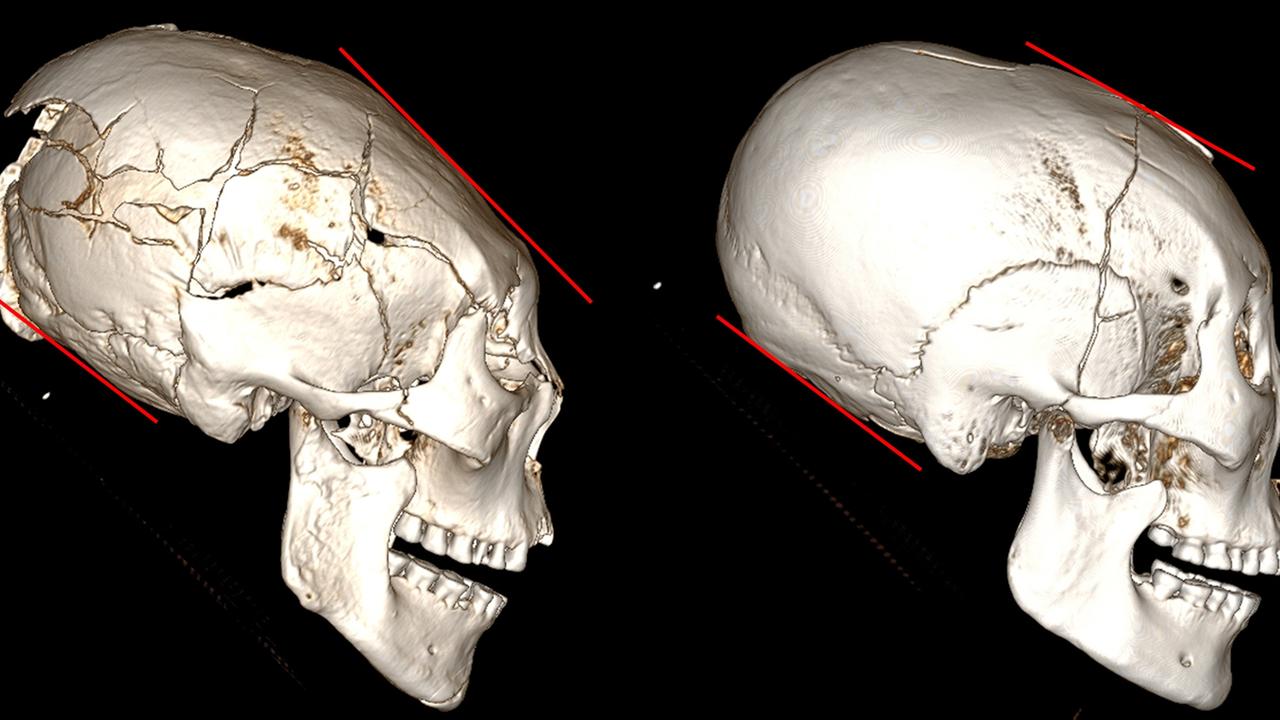Mystery behind morphed ancient skulls discovered around the world
Bizarre morphed skulls have been uncovered around the world — but what do they mean? The truth is stranger than fiction.
Xenomorphs? Alien-human hybrids? Once again, truth is stranger than fiction. And newly discovered skulls in China reveal just how alien our ancestors were.
And yet, perhaps not so alien after all.
Turns out, elongated skulls were a widespread ancient phenomenon.
Discoveries from Peru to Germany can now be added the resting places of distorted skulls from China dating back to 10,000BC.
Not that these are the oldest. Examples found in Australia are believed to be 13,000 years old.
And, believe it or not, moulding skulls is so widespread today you may even have one yourself.
“These actually are not even a rare phenomenon in the history of human culture all over the world and through all times. Even into modern times, as reports from 19th century France illustrate,” said archaeologist Jens Notroff, who is part of a team excavating at the world’s oldest stone architecture — Göbekli Tepe — that recently discussed evidence of a “skull cult”.
RELATED: Why we have apocalypse on our mind
RELATED: Remote tribes clinging to ancient world
RELATED: Scientist: Mummies may be aliens
ANOTHER BUG-HUNT?
It’s odd. Therefore aliens?
Indiana Jones and the Crystal Skull was a rollicking good yarn. But it’s a fireside tale taken to extremes by ancient alien proponents, conspiracy theorists and … cranks.
Bio archaeologist Dr Kristina Killgrove says the best antidote for such tall tales is discovering just how widespread the practice of shaping skulls was.
And that the reasons remain with us even today.
“Cranial vault modification has been practised for many millennia, and bioarchaeologists have found evidence of modified skulls in Europe, Asia, Australia, Pacific Islands, Africa, and the Americas,” Dr Killgrove says.

All are very human. (Not that extraterrestrials are ever going to have as much commonality as Zeus’ mythological bull to successfully mate with a human).
And recent attempts to portray “discoveries” of Peruvian alien mummies have proven to be desecrations of grave-robbed bodies, with a thick layer of whitewash on top.
All of which distracts from the true power of the stretched skulls.
“Since this kind of manipulation is irreversible, it is marking a remarkable and noteworthy decision (and effort invested),” Mr Notroff says. “It is certainly following some very specific motivation.”

EXTREME FASHIONISTAS
“Clothing maketh the man.”
So too, it seems, do the tattoos. The lip rings. The nose studs. The stretched earlobes.
Studies if the Inca and Maya reveal skull deforming was all about making an impression, says Dr Killgrove. A statement about one’s place in society.
“In these cultures, it appears that shaping a baby’s skull held social significance, a kind of permanent marker of an ethnic and/or status group,” she says.
In other words, everybody instantly knew who and what you were.
And there’s nothing unusual about that.
“There are numerous examples of body modification throughout time, around the world, and in literally every part of the body, from tattoos to bound feet to neck rings. We modify our kids’ heads today through ‘helmet therapy’. In general, these practices are cultural signifiers — they represent someone’s inclusion into a group, such as an ethnic group, a gender group, or an age group.”

But it is risky to make generalisations.
“Since this phenomenon is so far spread across time and space … there hardly can be one unifying explanation to this practice, that means many regional and historic impact factors have to be considered,” Mr Notroff says.
MODERN XENOMORPHS
Dr Killgrove says there is no evidence ancient practice of shaping skulls affected the subject’s intelligence.
“This is good news for modern people, since we engage in cranial vault modification (CVM) today — it’s just called “helmet therapy,” she says.

Babies are encouraged to sleep on their backs to reduce the risk of Sudden Infant Death Syndrome. But, because the baby’s bones are yet to harden, this can produce a ‘flat spot’ at the back of their heads.
“Many parents are concerned about what their child’s skull looks like”, Dr Killgrove says. “Helmet therapy lets them modify their child’s skull to be round — the current cultural norm.”
COMMON CREATIVITY
Shaping a skull isn’t all that hard. Though, it may be somewhat uncomfortable …
And different cultures, at different times, used different methods.
“The elongated shape many people are familiar with was often made by wrapping strips of fabric around a baby’s head, coaxing the malleable skull bones to grow into that shape,” Dr Killgrove says.
“Another method is based on cradle-boarding — securing an infant on a board (often so the baby could be worn) but also securing a smaller board to the front of the head.”

Both would take two to four years to produce the desired result.
“Being interested in physical differences is a hallmark of being human — and changing one’s body to encourage people to notice your body and its meanings is also as old as humankind,” Dr Killgrove says.
“What is so remarkable about this recent study at the Houtaomuga site in China is the long continuity of this practice among the local population there,” Mr Notroff says. “This illustrates the deep roots and apparently special meaning of this ‘fashion’ for the people there.”
Jamie Seidel is a freelance writer. Continue the conversation @JamieSeidel



